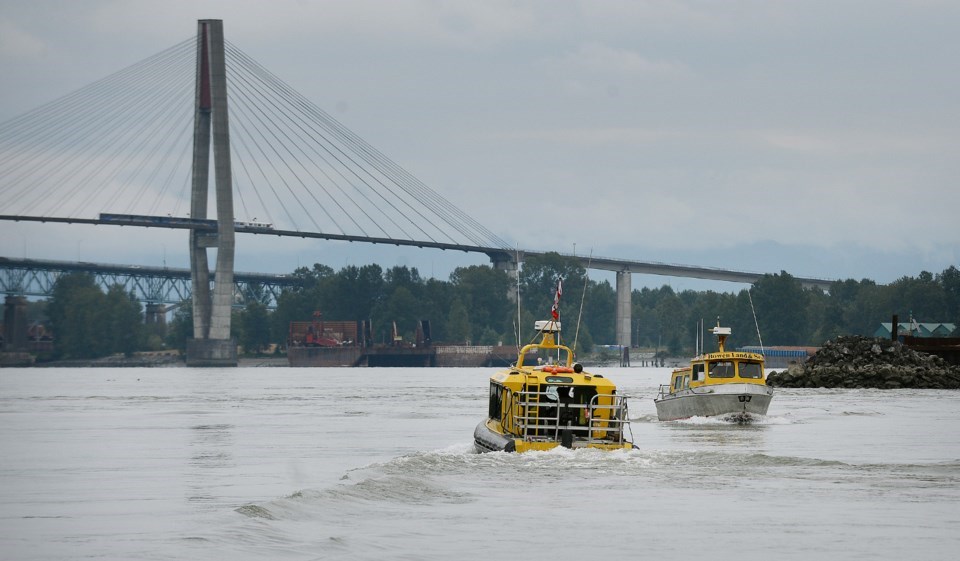The COVID-19 pandemic has not been kind to the Q to Q ferry.
A recent report to council states the Q to Q ferry ridership was “significantly” lower in 2021 than what had been projected because of the pandemic. Ridership has increased in recent months, but it’s still only at about 40% of pre-COVID levels.
That, noted staff, has resulted in fare revenues below what had been originally planned.
At the same time, the ferry has also attracted “significantly” less third-party contributions than what had been originally planned, which also resulted in lower-than-expected revenues to offset operating expenses. A staff report states staff are actively pursuing opportunities for sponsorships and other contributions.
“With the Q to Q ferry, we are expecting to continue to operate on a reduced schedule, relative to pre-COVID levels, because ridership is still down quite a bit,” said Mike Anderson, the city’s acting manager of transportation. “Although we are continuing to pursue sponsorships, we are not expecting them to be as we expected them to be several years ago when we developed the business plan for the ferry.”
According to a report presented to council as part of the 2022 budget process, the average per passenger cost to the city before the pandemic was about $8 per trip, but that increased to about $18 per trip in 2021. The city anticipates it will still have to subsidize the ferry service in excess of $15 per trip in 2022.
Coun. Chuck Puchmayr said he was shocked to learn that the city subsidizes the Q to Q ferry service at a cost of $18 per ride for each passenger. He said the ferry provides a valuable service between Queensborough and the downtown, particularly during rush hour.
“Can someone explain to me how we are trying to get more ridership? Is there some way to leaflet and give out free tickets so people can experience it once, and hopefully come back again?” he said at a Nov. 1 budget workshop. “It’s not a service that I want to cut because it cuts off that community to a decent form of transportation, but it really troubles me at how low that ridership is and how costly the subsidy is.”
Lisa Leblanc, the city’s director of engineering, said it’s been “really challenging” to promote the ferry too much during the pandemic because of its reduced sailing capacity.
“As restrictions ease, we are ramping up promotion again; we are being more proactive and inviting people on,” she said. “We are looking for ways, with a limited number of third parties that have come up, we are looking at ways to offer free tickets to get people on that first ride. But it is really ramping up again after a significant slowdown.”
The Q to Q ferry, operated by Bowen Land and Sea Taxi, had been transporting passengers between Queensborough and the Quay via two 12-passenger water taxis before ferry service ceased on March 20, 2020 in response to COVID-19 public heath orders. It resumed service in November 2020 with a limited schedule and with a number of safety protocols in place, including operating at half capacity.
In June, the city stated that a single Q to Q ferry would continue running through 2021. A report to council said staff had explored the idea of providing an additional boat on weekends and statutory holidays, but determined that the current budget isn’t sufficient to support an increase in the hours or frequency of service.
“To deploy a second boat, BLaST requires a minimum of 16 hours per week of service, distributed in a minimum of four-hour shifts,” stated the report. “The additional 16 hours would result in an additional $14,688 per month, just for the service, not including any other administrative or COVID safety materials, like masks and cleaning supplies. This additional cost cannot be accommodated in the current budget.”



